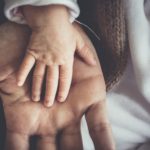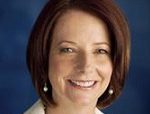NAIDOC Week at the Art Gallery of New South Wales
The celebrations of NAIDOC week continue with art exhibitions, artist talks and school holiday workshops. Amanda Peacock from the Art Gallery of New South Wales provides some historical background about the Yirrkala Bark Petitions.
This year’s theme for NAIDOC Week, ‘We value the vision: Yirrkala Bark Petitions 1963’, was a gift to us as programmers at The Art Gallery of New South Wales, connecting as it does with our collections and the political role of art in Indigenous Australian history.
The cornerstone of our Aboriginal and Torres Strait Islander art collection is a series of extraordinary bark paintings from Yirrkala commissioned in 1959 by Dr Stuart Scougall and Tony Tuckson, then deputy director of the Gallery. These barks were painted by senior Yolngu artists such as Mawalan Marika and Munggurrawuy Yunupingu, men who would be instrumental, only four years later, in the creation of the Yirrkala Bark Petitions.
Yirrkala was a mission settlement established in the 1930’s, and artmaking has been used by the local Yolngu people since these early days to ensure their culture was understood and respected. Marika and Yunupingu were among the artists who worked with the Reverend Wilbur Chaseling at the Yirrkala Mission in 1962 to create the Yirrkala Church Panels.
These two panels, painted with the complementary Dhuwa and Yirritja clan designs, were mounted on either side of the Yirrkala mission church altar where, for the first time, Yolgnu and Christian spirituality was publicly recognised on an equal footing, expressing a genuine cross cultural relationship. This approach of communication through artistic language led in 1963 to the creation of the Bark Petition, combining a written statement and signatures with clan designs to protest the proposed mine in Yolgnu country, an assertion of Yolngu law and sovereignty.
The mine went ahead, destroying much of the local environment and sacred sites, but the legal challenge by Yolngu, the country’s first land rights case, was a defining moment in establishing the Aboriginal Land Rights movement. It is very exciting to be able to welcome someone as closely connected to this history as the artist Wanyubi Marika to speak at the Gallery to celebrate this NAIDOC theme.
Wanyubi is the son of Milirrpum, the ‘third’ elder or leader of the Rirratjingu clan, after Mawalan and his brother Mathaman. After the deaths of Mawalan, the original plaintiff in the case, and of Mathaman, it was Wanyubi’s father who represented his people in Darwin’s Supreme Court, Milirrpum vs Nabalco. Wanyubi will speak about the Yirrkala barks in our collection and reflect on the significant legacy of these artists to kick off a night of free Indigenous programming for Art After Hours, the Gallery’s late night programs, on Wednesday 10 July.
The theme of art and politics continues in the 6.30pm Celebrity Talk featuring Gurindji/Malngin/Mudpurra artist, curator and academic Brenda L Croft in conversation with some of the subjects and co-collaborators of her photographic series Strange fruit, Conference call and The big deal is Black, currently on exhibition in the Yiribana Gallery Project Space on Lower level 3.
Brenda was a founding member of the Boomalli Aboriginal Artists Cooperative and played a key role in Indigenous Sydney’s political and artistic avant-garde of the 1980’s and 90s. Her work directly challenged portrayals of Aboriginal people as ‘other’, presenting a positive image of Aboriginality from an insider’s viewpoint, ‘letting you see something of us on our own terms’ as she has said. Her work retains its radical edge today. Brenda will be joined by Bonny Briggs, Tim Bishop, Jody Chester and Mary Mumbulla in a discussion facilitated by Bundjalung and Kullilli journalist Daniel Browning, which promises to be lively.
Live music in the Artbar performed by the well known Aboriginal artist Peter Yanada McKenzie, also a songwriter, will give the Gallery spaces a buzz during this night of celebrations, while throughout the week Wiradjuri artist and Gallery Educator Tjanara Talbot will lead daily holiday artmaking workshops for children aged 5-13, who will learn a song in the Wiradjuri language and develop their watercolour painting skills in response to works in the Gallery’s collection.
NAIDOC Week is a time for celebration, and we hope everyone can make it into the Gallery this week to help us celebrate.
Amanda Peacock is Coordinator of the Aboriginal and Torres Strait Islander Art Programs at the Art Gallery of New South Wales.












